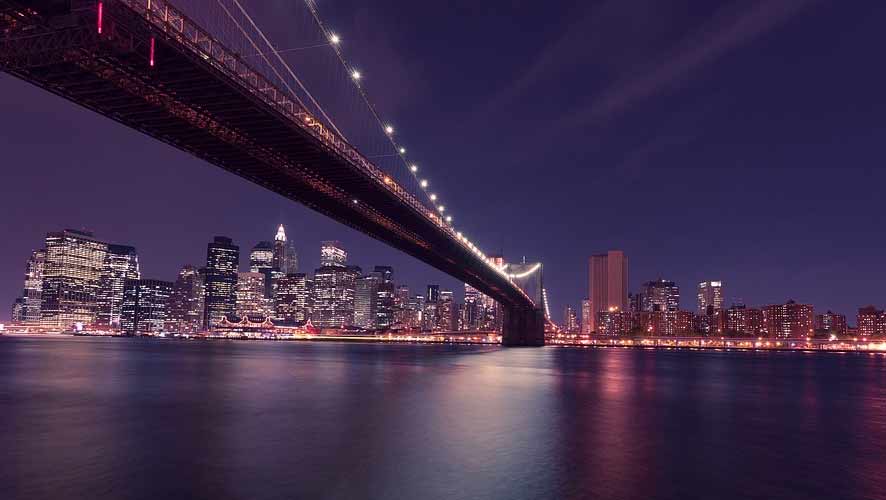I am amazed at how many of the buildings and boulevards of Brooklyn —designed by some of the world’s greatest architects of the time— either pre-dated the building of the Brooklyn Bridge, when Brooklyn was the third largest city in the country, or came into existence soon after, when Brooklyn became part of New York City.
I was born in Brooklyn, and when I was appointed to the bench in 1994 I returned to my roots as a judge in the Brooklyn federal courthouse. I soon reconnected with my remembrances of when I was a young boy fascinated by the remnants of the old Brooklyn which in the 19th century and early in the 20th was a bucolic paradise, with majestic buildings, spared of the noises and turbulence that lay across the East River:
* Just a few blocks from the courthouse is the Plymouth Church, built in 1849-50. Its first minister was Henry Ward Beecher, the prominent leader of the abolitionist movement. It once hosted Abraham Lincoln and sponsored his primary anti-slavery speech. In 1867 the church sent a group to the Holy Land, including a young Mark Twain, who wrote about the experience in The Innocents Abroad, and whose speakers throughout the years included William Lloyd Garrison, Clara Barton, Charles Dickens, Ralph Waldo Emerson, Horace Greeley and Dr. Martin Luther King, Jr. I was there shortly after I took the bench and I was mesmerized by the pulpit where all these legends had spoken.
* The Brooklyn Borough Hall, completed in 1848, is a spot-perfect example of Greek Revival architecture. I was there just a few months ago when I visited the Brooklyn Borough President, and marveled at how it had not lost its grandeur throughout the years.
* Eastern Parkway was conceived in 1866 by perhaps the greatest American architects and landscape designers of their time, Frederick Law Olmstead and Calvert Vaux, as the world’s first parkway. I’ve driven on it many times.
* I often pass the great Beaux Arts Brooklyn Museum, built in 1895, the third largest museum in New York City. I feel remiss that I have never spent enough time there rummaging through its 1.5 million works of art.
* The same could be said for the equally impressive Beaux-Arts Brooklyn Library, built in 1896, the fifth largest public library system in the United States.
* Prospect Park has a rich history, being designed in 1867 by Olmstead and Vaux just after they completed Central Park. Its beauty is enjoyed by over 8 million annually. I remember walking with my mother through many of the 526 acres and rowing down its beautiful lake.
* Ocean Parkway, built in 1874-76, also designed by Olmsted and Vaux, runs from Prospect Park for five miles down the spine of Brooklyn to Brighton Beach. It was fashioned after the great boulevards in Berlin and Paris, with its central roadway, grassy median-pedestrian path and its forever bike path, the first of its kind in the country when it was built in the 1890s. I think I was about five when I rode my three-wheeler down it.
* I always make it a point to visit the Brooklyn Botanical Gardens near the museum as often as possible. I’ve been to at least a dozen weddings there amidst an extraordinary array of plants and flowers. It was built in 1910 and today houses over 14,000 types of plants. It’s also home to the world-famous Bonsai Museum and has a bunch of specialty gardens. My favorite is the Japanese Hill-and Pond Garden. You walk over a wooden bridge with stone lanterns leading to a Shinto shrine. There is nothing more peaceful than sitting on one of the stone benches in front of one of the many ponds filled with hundreds of Japanese koi fish.
* And then there is, of course, Coney Island, since 1927 the home of the world’s iconic Cyclone roller coaster. I haven’t been there since I was a kid, and wish I had the courage to do it when my Dad took me there but I was always afraid. It’s on my bucket list now and maybe I’ll do it yet.
* The Brooklyn Academy of Music at the intersection of Fulton Street and Ashland Place houses the great Peter Sharpe Building with its 2,200-seat glittering Opera House, which opened to the public in 1908 with Geraldine Farrar and Enrico Caruso performing Gounod’s Faust. Every time I’m there I think of what it must have been like seeing the great Caruso on that stage. But the Opera House also puts on great theater. I saw the best production of Shakespeare’s Richard III there a few years ago.


